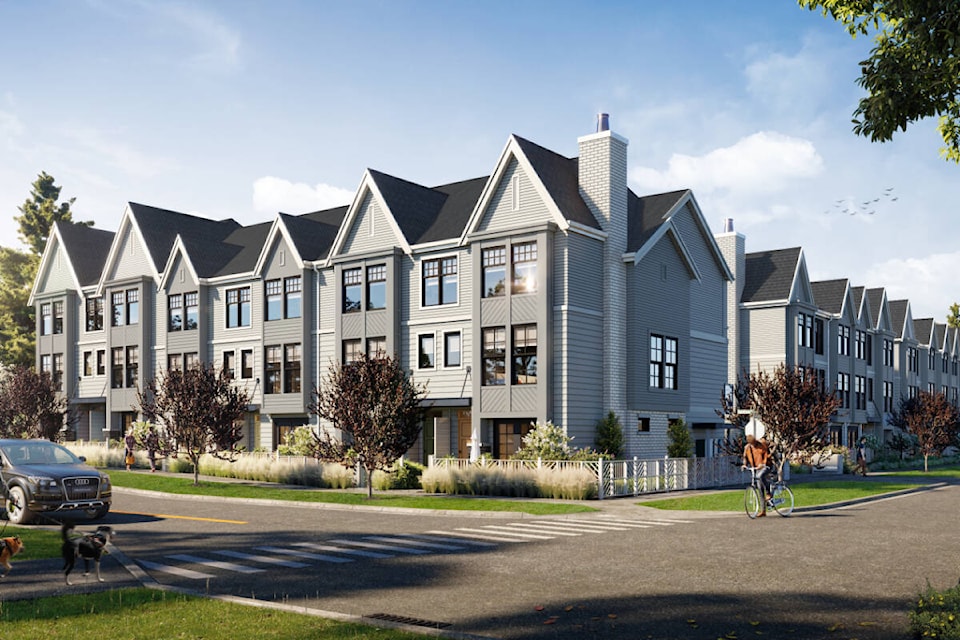Natasha Baldin/News Staff
After more than three years of consultation and a five-hour public hearing, Saanich council has approved a six-storey condominium development at the corner of Shelbourne Street and Freeman Avenue.
But it was a lengthy, arduous approval process, something that is likely contributing to the larger Greater Victoria housing crisis, according to a local real estate analyst.
The project was initially submitted in April 2020 and first presented by Abstract Developments to council in March 2023, when council went against staff’s recommendations to just approve the development and voted instead to bring the proposal to a public hearing instead. This decision followed delays for another Abstract project to get 25 townhouses approved near Swan Lake in Saanich earlier this year.
These extended timelines are fairly typical for the district, according to Leo Spalteholz, a real estate analyst and volunteer with Homes for Living.
“If you look at the municipal process in general in Saanich, many projects take this long to go through,” he said. “Part of the delay is how long it actually takes to get in front of council, and the other part is that council decided to do this public hearing, which took another four months.”
However, he stated the time it takes to pass a condominium housing project — especially one that had already proved to be compliant with Saanich’s official community plan (OCP) — is one of the leading causes of the current housing shortage.
“It doesn’t matter if 100 per cent of these projects get approved — the throughput isn’t simply close to enough,” he said. “It’s like trying to put out a wildfire with a garden hose.”
“We know we need the housing, but it’s more about the fact that we’re putting everything through the wringer.”
While the municipality allocates a considerable amount of time and consultation into forming the OCP, Spalteholz added the plan often “sits on the shelf gathering dust.” Even if developers match the plan, he said it holds little-to-no weight in council, who often send the projects to a public hearing anyway.
Although the majority of councillors were in favour of the development, citing the importance of putting more housing along the district’s major corridors, many voiced concerns about the project’s lack of affordability.
Coun. Nathalie Chambers was the only member to oppose the motion, stating she “cannot approve any more unaffordable housing.”
“We need to stop looking at affordability in the future, and we need to look at it now. Creating density that is affordable in the future is not the idea of intergenerational equity,” she said.
While Spalteholz was in favour of the development’s approval, stating it is beneficial to address the “severe shortage of market-rate units,” he said he would also like to see council focus on affordability going forward.
Streamlining the process for similar developments using the OCP as a guideline would allow council to allocate more time and funds on how to provide more affordable units, he added.
“We shouldn’t be spending all our time on (these condo developments),” he said. “Those will build themselves if we let them. What doesn’t build itself is really deeply affordable housing — that’s where we need to be putting our attention.”
The revised plan the developers proposed at the public hearing saw a reduced number of units from 107 down to 95, after they took the public and council’s concerns around privacy and lack of green space into consideration.
While the initial proposal included two separate buildings, the revised plan replaced the second building with a parkette space. The building’s sixth floor was also stepped back amid privacy and shadow concerns.
Despite the housing shortage, Spalteholtz said the unit reduction is something he frequently sees from developers in this context.
“I’m always shocked that a lot of effort goes into getting less homes as a result,” he said. “I would love the city to say … ‘How do we get more homes instead of less?’”
Councillors who voted in favour of the motion said they were pleased with the developer’s ability to apply feedback to the revised plan.
“Changes were being recommended, and changes are being listened to,” said Coun. Teale Phelps Bondaroff, adding he was “on the fence” about his decision prior to the public hearing.
Although the development is ultimately a success for the community by providing more high-density homes along a central corridor, Spalteholz said changes to the approval process are needed to address the larger housing issue.
“This project is an example of the barriers any project faces … including the deeply affordable housing projects, and that’s really the reason we’re in this mess of housing right now,” he said.
RELATED: Saanich council passes controversial Swan Lake townhouses in narrow vote
